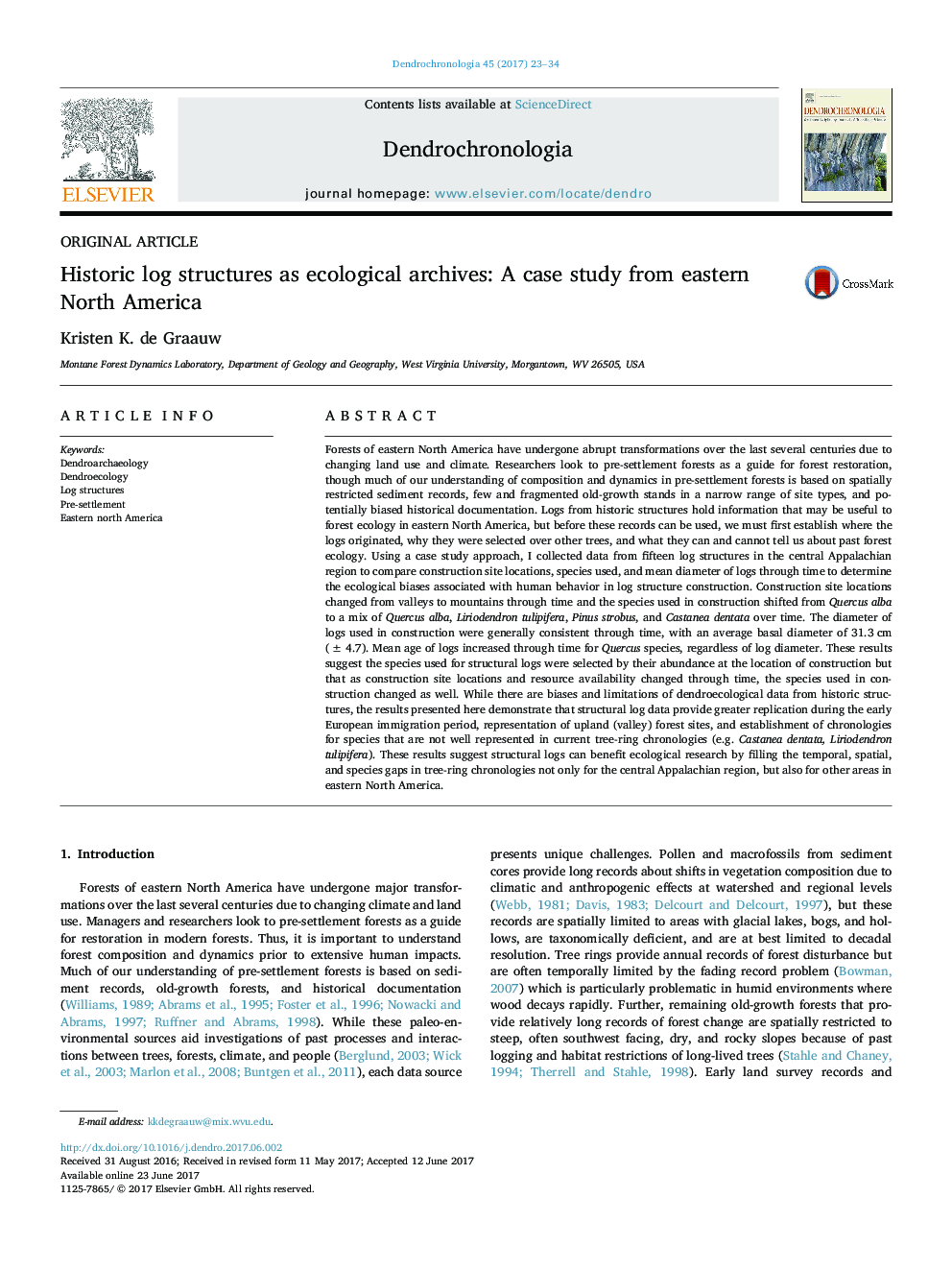| Article ID | Journal | Published Year | Pages | File Type |
|---|---|---|---|---|
| 6458967 | Dendrochronologia | 2017 | 12 Pages |
Forests of eastern North America have undergone abrupt transformations over the last several centuries due to changing land use and climate. Researchers look to pre-settlement forests as a guide for forest restoration, though much of our understanding of composition and dynamics in pre-settlement forests is based on spatially restricted sediment records, few and fragmented old-growth stands in a narrow range of site types, and potentially biased historical documentation. Logs from historic structures hold information that may be useful to forest ecology in eastern North America, but before these records can be used, we must first establish where the logs originated, why they were selected over other trees, and what they can and cannot tell us about past forest ecology. Using a case study approach, I collected data from fifteen log structures in the central Appalachian region to compare construction site locations, species used, and mean diameter of logs through time to determine the ecological biases associated with human behavior in log structure construction. Construction site locations changed from valleys to mountains through time and the species used in construction shifted from Quercus alba to a mix of Quercus alba, Liriodendron tulipifera, Pinus strobus, and Castanea dentata over time. The diameter of logs used in construction were generally consistent through time, with an average basal diameter of 31.3 cm (±4.7). Mean age of logs increased through time for Quercus species, regardless of log diameter. These results suggest the species used for structural logs were selected by their abundance at the location of construction but that as construction site locations and resource availability changed through time, the species used in construction changed as well. While there are biases and limitations of dendroecological data from historic structures, the results presented here demonstrate that structural log data provide greater replication during the early European immigration period, representation of upland (valley) forest sites, and establishment of chronologies for species that are not well represented in current tree-ring chronologies (e.g. Castanea dentata, Liriodendron tulipifera). These results suggest structural logs can benefit ecological research by filling the temporal, spatial, and species gaps in tree-ring chronologies not only for the central Appalachian region, but also for other areas in eastern North America.
